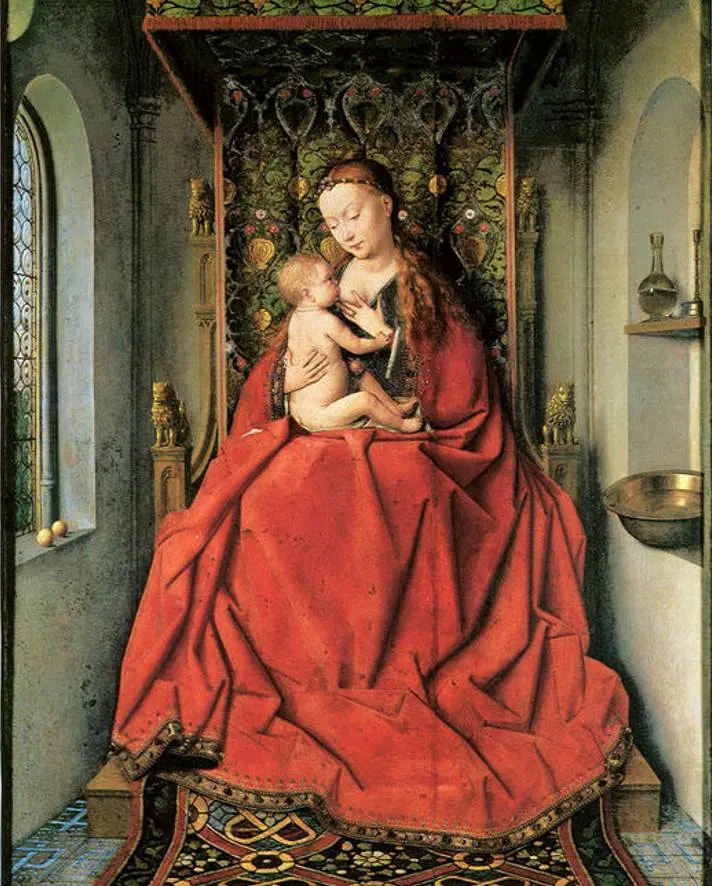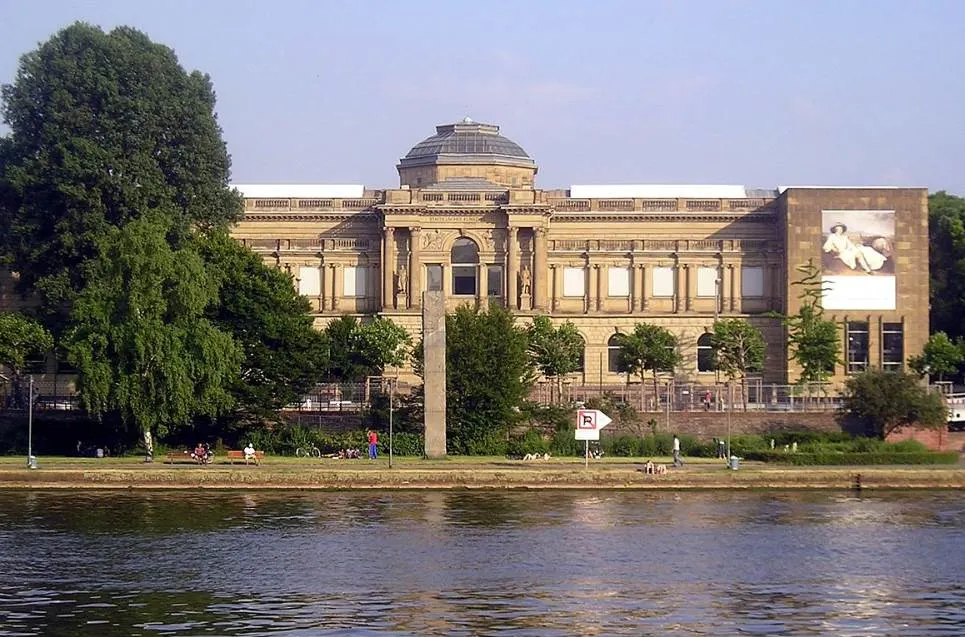One of the most innovative artists in history is considered to be one of the leading figures of the Flemish Primitives.
They are known as Early Netherlandish artists and were active in the Low Countries and pioneers of the northern Renaissance.
Jan van Eyck (1390-1441) was one of the first artists who mastered oil painting, a medium that allowed him to integrate stunning details into his paintings.
In this article, we’ll take a closer look at some of the most interesting facts about the Lucca Madonna by Jan van Eyck, one of the Renaissance artist’s celebrated works.
1. It’s one of the final works in the oeuvre of Jan van Eyck
Jan van Eyck was born before 1390 and traveled quite a bit during his lifetime. He settled in Bruges in 1429 after he became the court painter of Philip the Good, the Duke of Burgundy at the time.
He earned a handsome salary and this allowed him to have some level of artistic freedom. He painted multiple works for the Duke but also received numerous commissions from wealthy individuals in Bruges, an important commercial port city in the 15th century.
Little is known about the circumstances in which this work was painted, but it’s assumed that the Lucca Madonna was completed around 1437, just 4 years before the artist passed away.
This was around the same time that he completed the Dresden Triptych, a painting that looks strikingly similar (at least in the central panel).

2. It depicts the Virgin Mary who is breastfeeding her infant Jesus
The way that the composition is set up makes art historians assume that this painting was the central panel of a triptych similar to the Dresden Triptych. The outer panels have been lost through history.

We can see the Virgin Mary who is breastfeeding her infant child Jesus Christ while she is sitting on a large wooden throne.
This type of painting is referred to as “The Nursing Madonna” in English and the “Madonna del Latte” in Italian (Madonna of the Milk). It was common until this subject was banned by the Council of Trent in the 16th century which initiated the Catholic Counter-Reformation.
The small room makes us suggest that this is a chapel. It features blue tiles and a carpet decorates the floor’s center.

3. The Virgin Mary has been identified as the artist’s wife
Just like most other artists in history, Jan van Eyck used models to produce his paintings. He often didn’t have to look far because he sometimes included the people who commissioned the work.
Some examples of this notion are the stunning “Arnolfini Portrait” and the equally impressive “Virgin and Child with Canon van der Paele.”
He produced one portrait of his wife Margaret in 1439 which as possible a pendant to his potential self-portrait that goes by the title “Portrait of a Man.”
Although it’s hard to judge, the intimate nature of the painting with a breastfeeding child makes art historians assume that his wife served as the model for the Virgin Mary.

4. Mary’s throne is a reference to one mentioned in the Hebrew Bible
Jan van Eck didn’t randomly include objects in his paintings and this applies to the Lucca Madonna as well.
When we look closely at the wooden throne on which Mary is sitting then we can see that it’s decorated with 4 lions.
This is a reference to the Throne of Solomon that is mentioned in the Hebrew Bible. In “1 Kings 10” it says:
There were six steps to the throne, and the top of the throne was round behind, and there were arms on either side by the place of the seat, and two lions standing beside the arms. Twelve lions stood there on one side and on the other upon the six steps.
5. The artist included multiple religious symbols in this painting
The reference to the Throne of Solomon isn’t the only religious symbol integrated by the artist. Some other symbols include:
- The Virgin Mary is depicted as a throne to support her oversized infant Jesus Christ.
- The bowl in the right niche is a “piscina” in which the priest washed his hands.
- The fruits on the left are either apples or oranges and are a reference to Paradise.

6. The painting’s name is a reference to one of its former owners
The painting’s name, Lucca Madonna, is a reference to the owner of the work in the early 19th century, Charles II, Duke of Parma and Lucca (1799-183).
The Duchy of Lucca was a short-lived Italian state that existed between 1815 and 1847. It was centered around the relatively small city of Lucca in the Tuscany Region of Italy.

7. How big is the Lucca Madonna by Jan van Eyck?
Just like the Dresden Triptych, the Lucca Madonna is a relatively small work of art that was probably commissioned for personal devotion.
It was most likely a triptych that could be closed and brought along with its owner. This makes the incredible level of detail included by Jan van Eyck, especially Mary’s jewelry and clothes, even more impressive.
This oil on panel painting has dimensions of 65.5 x 49.5 centimeters (25.7 x 19.4 inches).

8. Where is the painting located today?
The painting made its way from Lucca to Germany and became part of one of the most important and popular art museums in Germany.
The Städelsches Kunstinstitut und Städtische Galerie, commonly referred to as the “Städel,” is located on the south bank of the Main River in the heart of Frankfurt.
Founded in 1817, the museum houses over 3,100 paintings, 660 sculptures, and over 100,000 drawings and prints, making it one of the most impressive collections of art in the country.

